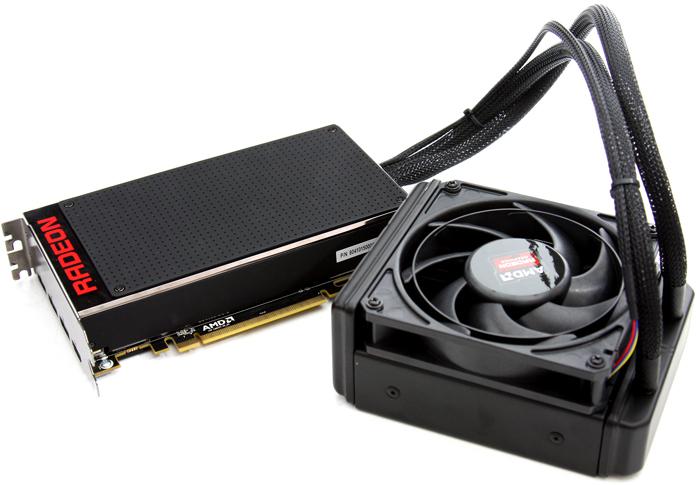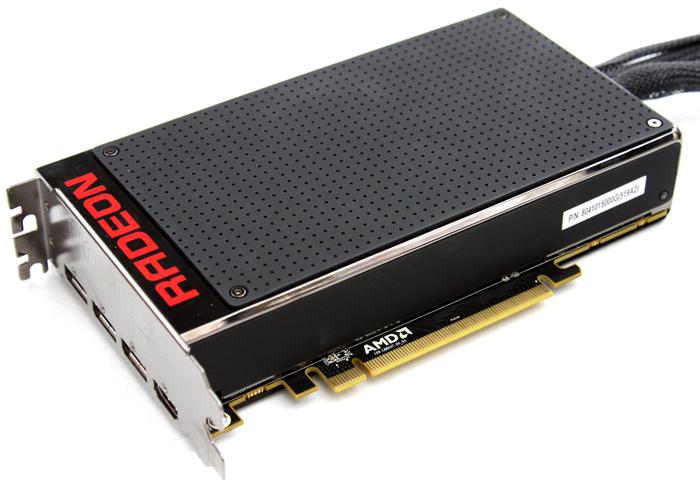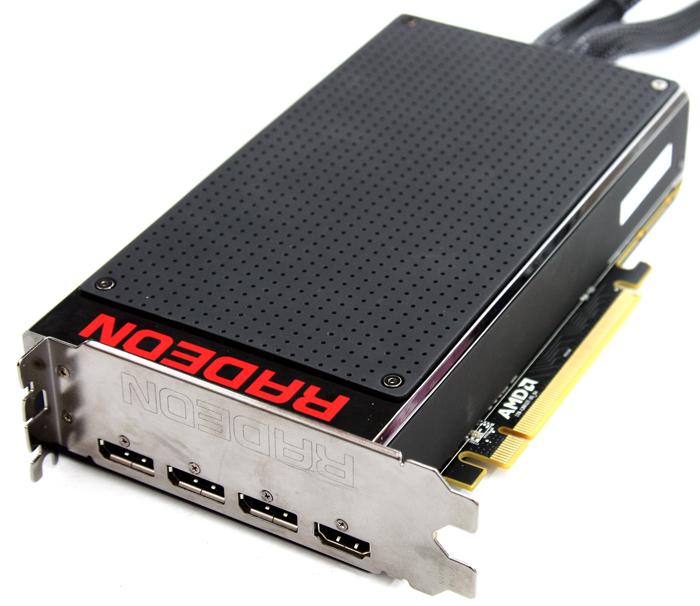Product Photos
Product Photos Gallery
We will start with our photo-shoot first, then go in-depth into the specifications and architecture followed by the metrics in heat, noise and obviously benchmarks. Three pages worth of photos first then, from our own photo-shoot of course.
Packaging first, as always. AMD sent out the unit in fairly simple packaging, we doubt that this will be the presentation next week when you buy it from any of the board partners. But let's move on to what it's all about shall we?
Here we have the AMD Radeon R9 Fury X. This flagship model comes fitted with a liquid cooler. Everything is powered and regulated from the card itself and it should be a fairly easy fit inside any PC chassis with its 120mm mounts. The Radeon R9 Fury X will get 4096MB of 4096-bit memory, has 4096 shader processors and is a fantastic product for 4K gaming. Yes, ultra high definition gaming at that Big Whopper of a resolution called UHD - 3840 x 2160 pixels is where this product will shine bright. The GPU Boost clock is set at 1050 MHz and, as our article will show later on, there's room for tweaking as we got this puppy running stable at roughly 1125 MHz on the boost frequency.
The new design for the Radeon R9 Fury X is interesting, since the card does not have any memory ICs mounted on the PCB anymore, (HBM is placed onto the GPU) there was a nice opportunity to make the product relatively small. As a result the Radeon R9 Fury X measures up at 19.5cm for those that like and reside in the Metric system, which is roughly 7.7 inches. The packaging is dual-slot based with an alu housing / outer shell with rubber inserts on the front-side. There are some things LED activated as well, but I'll show you that later on.
AMD allows you to opt for the multi-GPU road with Crossfire as an option. You can pair say, two in one PC and have them do a decent workout. A Crossfire bridge is no longer needed. The data will be moved over the PCIE (preferably 3.0) bus. The Radeon R9 Fury X has no DVI monitor connectors. That is a bit of a weird call to make. You could use an HDMI to DVI splitter, but dual-link would not be supported so you would be stuck at Full HD. Nice to see are three DisplayPort 1.2 connectors, and thus the one HDMI connector. I will make a comment on the HDMI connector though, it's HDMI 1.4a based. AMD for whatever reason decided not to make this an HDMI 2.0 connector. Now for the Fury X this might not be too relevant. But this means with Fury GPU based products, like the new project Quantum or Nano for example (which is is intended for small form factor PCs), you can't fully use it on the Ultra HD TV in your living room. HDMI 2.0 offers bandwidth support for 60hz @ Ultra HD, on 1.4a it'll drop back to a measly 30 Hz. A miss if you ask me, HDMI 2.0 is the best answer for products in the living room, while I agree that DP is the best solution for PC gaming. It's a bit of a thing for 4K gaming in the living room I'd say. So Ultra HD gaming at 60hz is only possible through Display Port.





